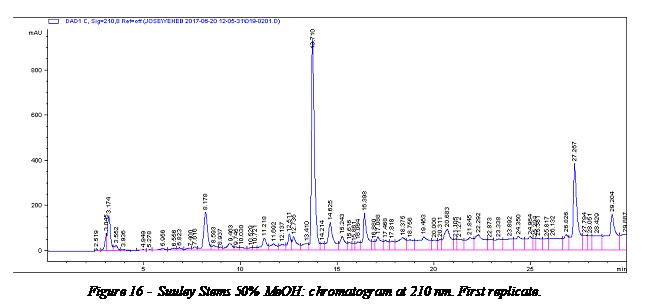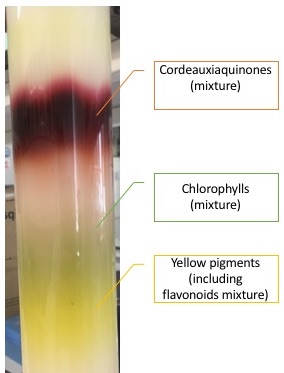Previously published scientific research into the plant, it’s uses and nutritional value.
Plant Features
Two variety of Yeheb are recognized; Suuley (see picture 8), a smaller variety from northern Somalia and Muqley (see picture 4), a taller and more common variety (Brilli & Mulas, 1939).
Yeheb is multi-stemmed plant. It has a long massive root or taproot that reaches deep into soil moisture, making the shrub to remain green all year round. In addition the plant has also smaller secondary lateral roots (FAO, 1988) that develop 10-40 cm under the soil surface but can grow up to 2.5 meters long. For this reason direct seeding is recommended as moving seedlings may cause the taproot to break and plant to die. Only fresh seeds give good germination which normally takes 2 weeks. The seeds have low viability if kept for a few months. However seeds coated in wood ash and stored in a sack are known to remain viable for at least a year. Vegetative propagation is possible.
Under good natural conditions there are up to 320 plants per hectare (Ali, 1998) with a seed yield of 5-8 kg per plant per season. The plant starts to produce pods after 4 years and production increases with age (Baumer, 1983). Such is the demand and free access to all range plants that the fruits often collected from the shrubs before they are fully mature (Wickens and Storey, 1984; Booth and Wickens, 1988; FAO, 1988).
The average forage production is 325-450kg/hectare (Ali, 1998) or 1-3 ton per hectare of above ground biomass (FAO, 1988).
Seeds can be the sole sustenance in times of dearth. The delicious, chestnut flavoured seeds may be eaten raw, roasted or boiled as a vegetable; seeds may also be boiled for sweet liquor (Menninger, 1977; Wickens and Storey, 1984; FAO, 1988). The leaves contain high levels of tannins and a tea is brewed from the leaves.
Medicinal use
There is little known about the chemistry of Yeheb. The only major substance specific to Yeheb that is known is cordeauxiaquinone (sometimes called cordeauxione). This substance produces a red pigment in the bones and tissues of animals that feed on the plant (Allen and Allen, 1981). But very little is known about its biological activity or function. The metabolism of cordeauxiaquinone is not well known. With regards to any possible medicinal use, Gutale et al (1984) claimed that cordeauxiaquinone deposited in bones might stimulate hemopoietic tissue to produce erythrocytes, both directly and indirectly so it might be useful medicinally to stimulate hemopoesis. A more recent study (Brink and Belay, 2006) stated that cordeauxiaquinone regulated gastric secretion and was able to treat burns in animals.
Phytochemistry
Dr Jose M Prieto, course director of the MSc in Medicinal Natural Products and Phytochemistry at the UCL School of Pharmacy committed to fund and offer one MSc project every year to the research of Yeheb. The main objective is establishing analytical protocols to fingerprint the secondary metabolism of Yeheb to find out whether domestication may have any impact on the chemistry of the plant. Also, we aim to further the description of more phytochemicals in this plant species.
2017 Ms Valentina Cattero started phytochemical analyses. She reviewed all the data published for the species and from her HPLC analyses (Fig 1) concluded that the phenolic fingerprint of Yeheb is virtually the same for both natural varieties (Muqley and Suley). She tried to isolate the characteristic red pigment cordeauxiquinone but a mixture was obtained.
2018 Mr Moinuddin Amrelia successfully accomplished the isolation of cordeauxiquinone (Fig 2) in a high degree of purity. This will serve as a chemical standard for quantitative HPLC analyses of varieties of C. edulis. He further isolated another compound, with a preliminary NMR profile consistent with a biflavone, which in case of confirmation would be a new compound for the species.
Nutritional value
The seeds have a lower protein value than other leguminous seeds and pulses, but are rich in sugars and fats (Kazmi, 1979). They contain well-balanced amounts of essential amino acids, especially lysine (3.9-6.9%) (Protabase, 2006), but they are deficient in tryptophan (Miège and Miège, 1978; El-Zeany and Gutale, 1982), methionine (Miège and Miège, 1978) and isoleucine (El-Zeany and Gutale, 1982). The seed lipids contain palmitic acid (26-31%), stearic acid (12-13%), oleic acid (31-32%), linoleic acid (25-30%) and traces of linolenic acid (FAO, 1988). The seed are eaten fresh, dried, roasted or boiled; they have a smooth consistency and an agreeable taste like cashew nut or chestnut. Yeheb is such a hardy species that during drought it is sometimes the only food left for the nomads; thus the plant can provide a valuable food for hot, dry regions, especially with low, uncertain rainfall that is common in Somalia.






